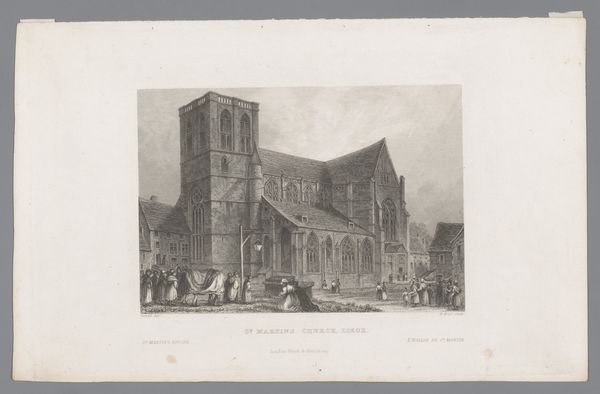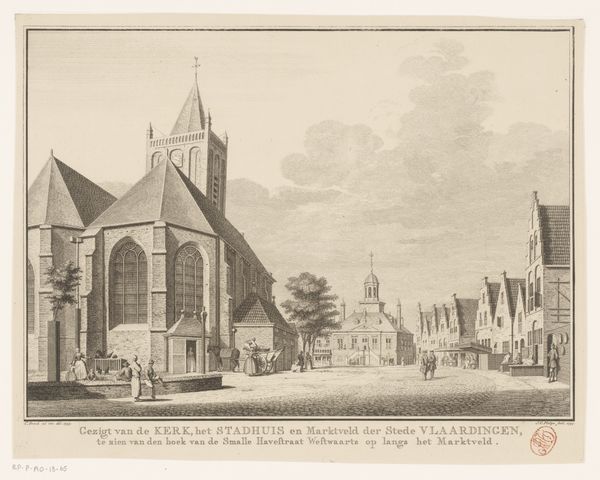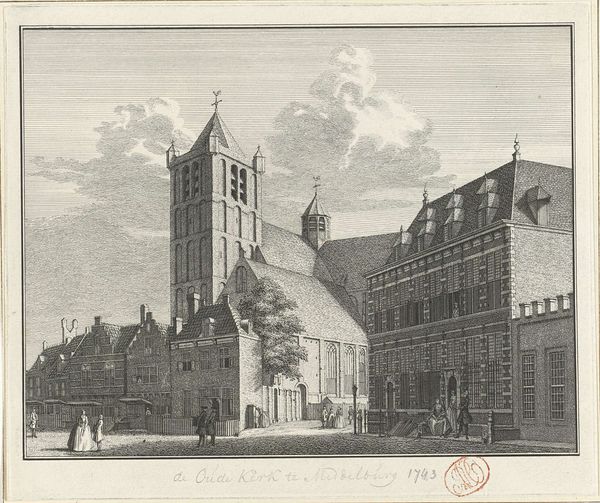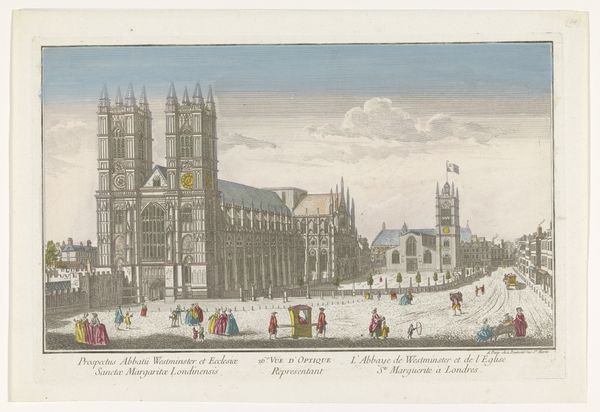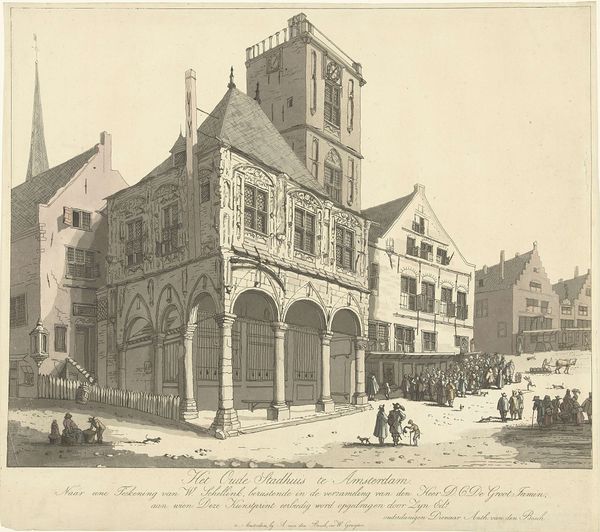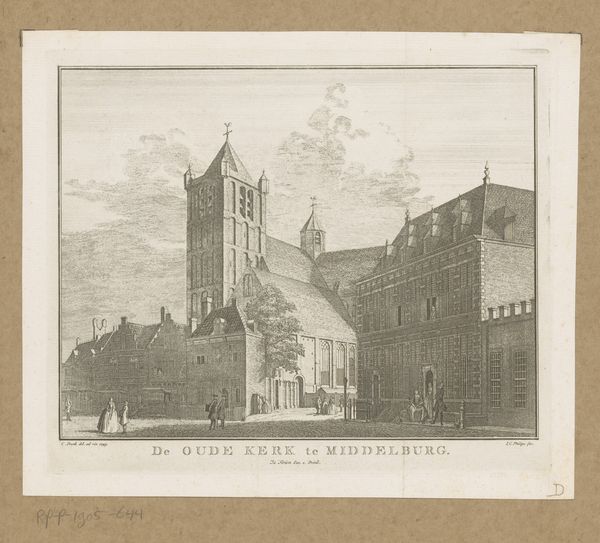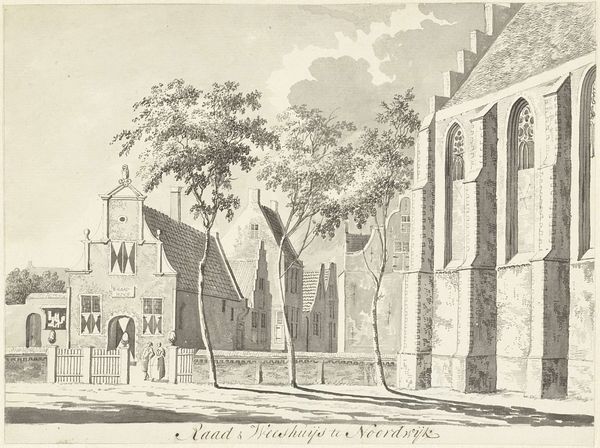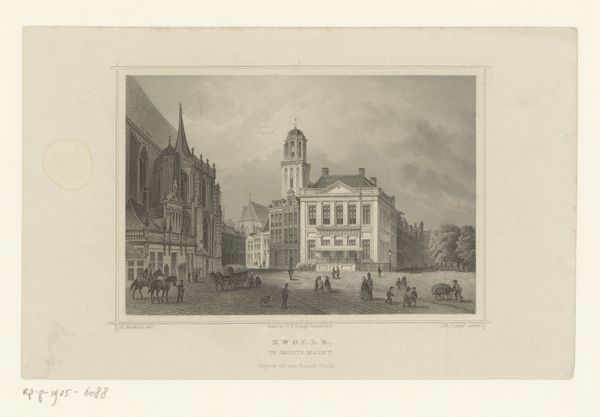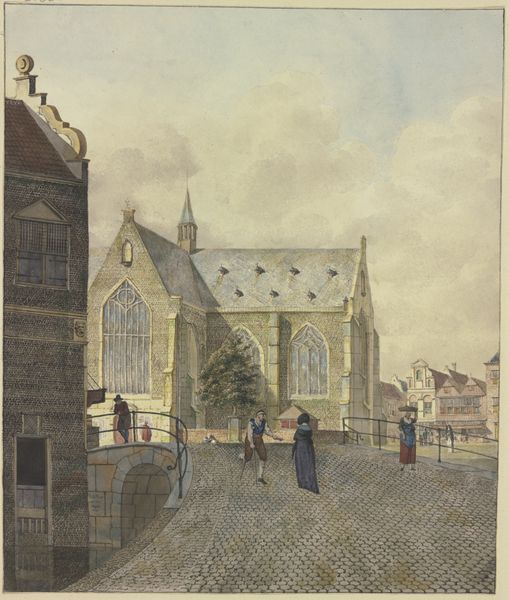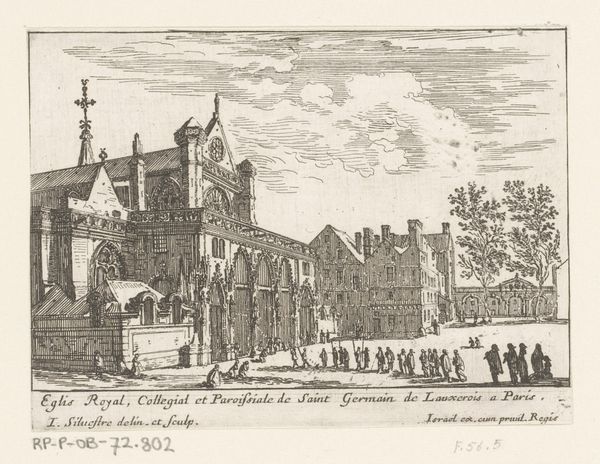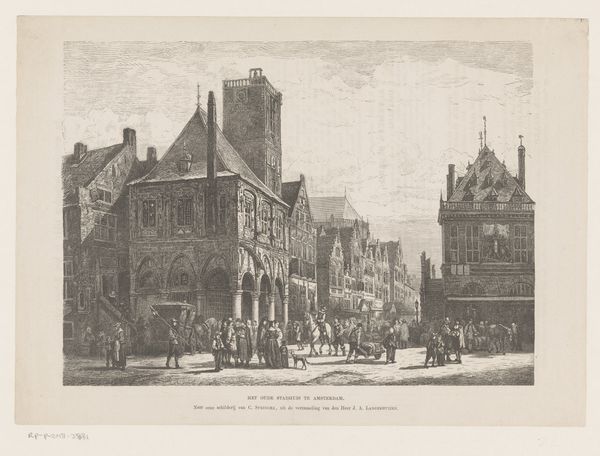
drawing, painting, print, etching, paper, engraving, architecture
#
drawing
#
16_19th-century
#
painting
# print
#
etching
#
landscape
#
paper
#
19th century
#
line
#
cityscape
#
engraving
#
architecture
#
realism
Dimensions: 263 × 373 mm (image); 315 × 425 mm (plate); 420 × 552 mm (sheet)
Copyright: Public Domain
James Malton created this print of the West Front of St. Patrick's Cathedral using etching and aquatint. These processes, especially when combined, allowed for the efficient reproduction of images. The etching created fine, precise lines, while the aquatint added tonal depth, mimicking the look of a watercolor wash. Think of the division of labor involved: from the mining of the metals used for the plates, to the preparation of the acid baths that bit into their surfaces, to the skilled hand of the artist. Malton’s choice of printmaking speaks to the growing market for images in the late 18th century, and to the democratizing effect of the medium, making architectural views accessible to a wider audience than could afford original paintings. But also think of the labor involved in the building of the cathedral itself. The massive stones, the soaring arches, all required countless hours of skilled and unskilled labor, a testament to both faith and human effort. Considering the materials and processes behind this print, and the cathedral itself, reminds us that art and architecture are always the product of collective work and cultural values.
Comments
No comments
Be the first to comment and join the conversation on the ultimate creative platform.

